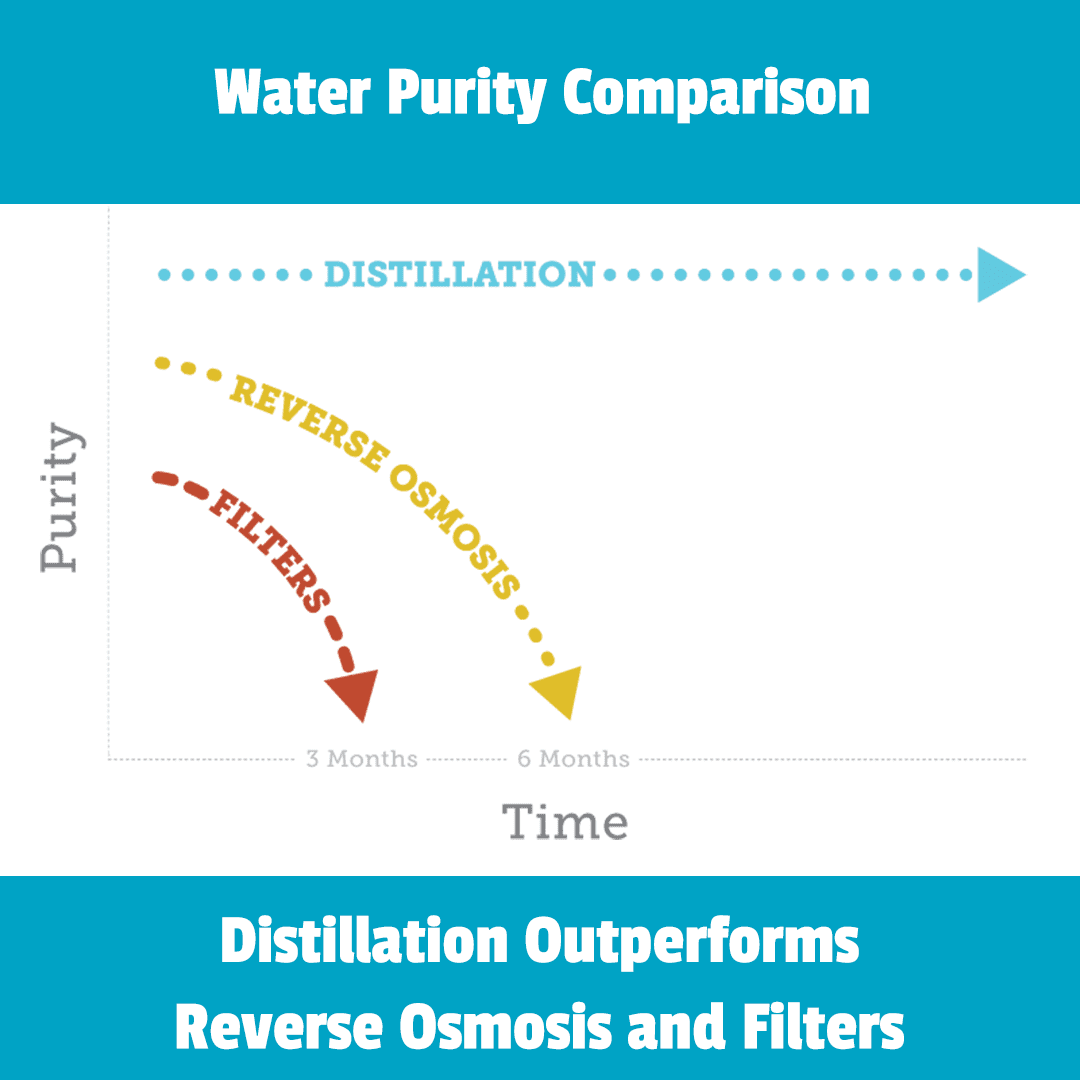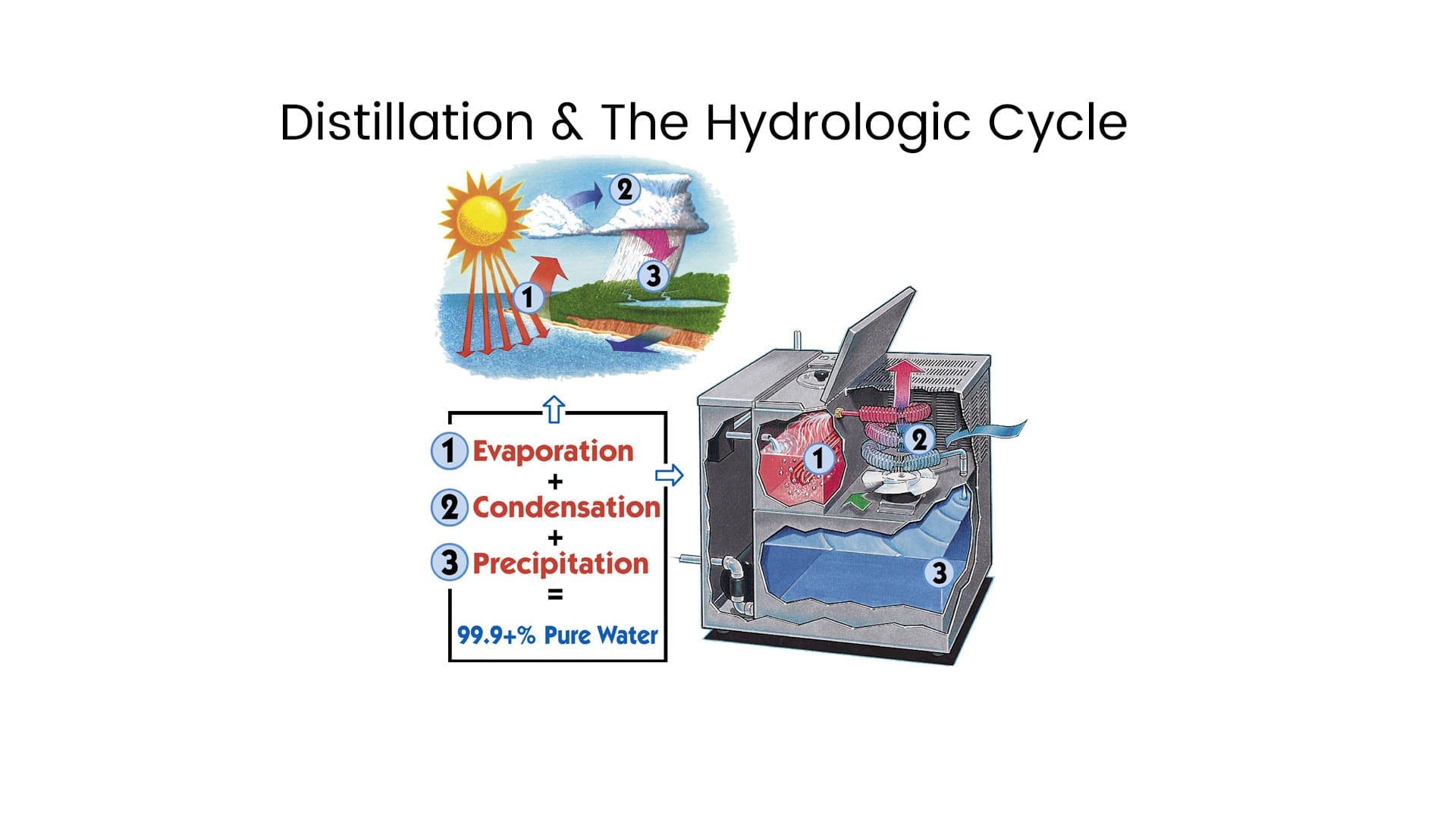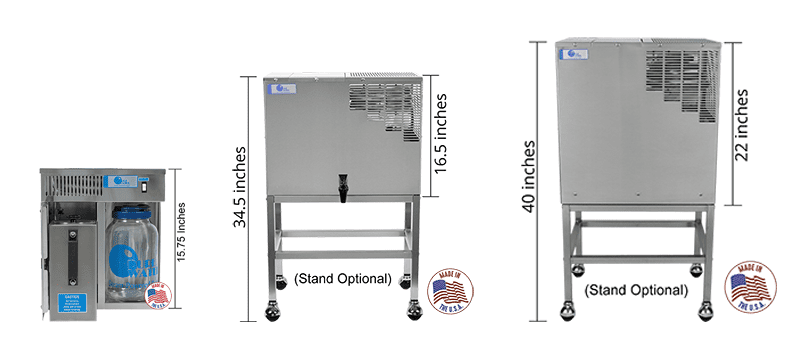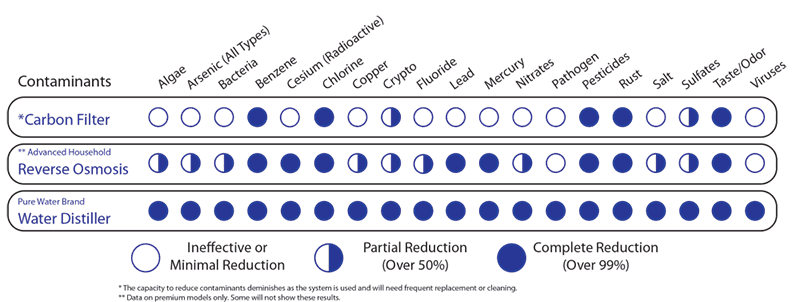Many people ask about the benefits of drinking water purified by reverse osmosis versus distilled water. Both systems can remove a number of contaminants, but distillation removes more contaminants and more reliably.

What is Reverse Osmosis?
Reverse Osmosis is a water filtration process designed to remove contaminants and impurities from water. It works by using pressure to force water molecules through a semipermeable membrane. The membrane has microscopic pores that block contaminants such as chemicals, salts, bacteria, and heavy metals, allowing water molecules to pass through. The first stage might involve a pre-filter that removes larger particles like sand or dirt. The RO membrane then handles the bulk of the work by trapping smaller molecules. Some systems also include a post-filter to remove residual impurities. The process can be slow, and for every gallon of purified water, several gallons may be discarded as wastewater depending on the system. Many have a storage tank while others are tankless.
Contaminants Removed by Reverse Osmosis Versus Distillation
Why Install a Reverse Osmosis System?
People install RO systems because they want to improve the quality of their drinking water by removing impurities that could negatively affect their health. Municipal water sources can contain pollutants or additives that people would prefer to avoid, and RO systems can help mitigate these risks. Additionally, individuals with specific health concerns, such as those with weakened immune systems, often choose RO systems for the added safety. People living in areas with poor water quality or who rely on well water also frequently install these systems to ensure cleaner, safer water. Moreover, RO water tends to have a cleaner taste than tap water, which appeals to many, much like a pitcher filter.

What is Distilled Water?
Distillation is one of the oldest water purification methods and is known for its high level of purity. The process removes nearly all bacteria, and dissolved solids, producing a type of water often considered the purest. Distilled water is created by boiling water and collecting the steam, which is then condensed back into liquid form much like Earth’s water cycle. This process effectively removes nearly all impurities, as they are left behind when the water is converted into steam. Once the steam cools and condenses back into liquid, the result is fresh, clean distilled water, which is free from most chemicals, natural pollutants, viruses and bacteria. This process yields pure H2O.

Reverse Osmosis versus Distilled Water
When comparing reverse osmosis water and distilled water, both offer many improvements over regular tap water, but they achieve this in different ways and to different degrees.
- Purity Levels:
- RO water typically removes about 90-99% of contaminants, including salts, chemicals, bacteria, and metals.
- Distilled water, on the other hand, removes nearly all, 99%+ dissolved solids, bacteria, and minerals. It is often considered “purer” because it eliminates almost everything from the water.
- Contaminants Removed:
- RO water removes large particles, heavy metals, salts, and other chemicals but may not be 100% effective at removing bacteria and viruses or other substances.
- Distillation, because of the heat involved, kills bacteria and viruses outright and also removes salts, dissolved minerals, and chemicals with higher boiling points than water. Pure Water distillers also come with a post carbon filter for any residual VOC’s.
- Taste:
- Many people find that RO water tastes better than tap water because it removes some contaminants and offensive odors and tastes, much like a pitcher filter.
- Distilled water is pure H20 and tastes absolutely clean and refreshing. It tastes pure because it is pure!
Is Reverse Osmosis Water Safe to Drink?
RO water is generally considered safe to drink, although it is not the safest water. The process effectively removes a wide range of harmful contaminants, making it safer than untreated tap water in most cases. Another potential downside is the waste associated with RO systems. For every gallon of purified water, several gallons may be wasted, which can be a concern for individuals conscious of water conservation.
Is Distilled Water Safe to Drink?
Distilled water is the best drinking water. Its high level of purity is highly sought after by those who understand the value of completely contaminant free drinking water.
Reverse Osmosis Cost vs Water Distiller Cost of Ownership
When it comes to cost, RO systems and water distillers present different investment profiles. RO systems require regular expensive filter changes, which can add to the long-term cost. Some systems may also need occasional professional servicing. Water distillers, by contrast, involve little maintenance beyond cleaning the system to remove the buildup left behind during the distillation process. Pure Water distillers have parts available and are meant to last for a very long time. We also provide phone and email support right here in the USA. With over 50 years of service and the best warranty in the industry, it’s hard to beat a Pure Water distiller!
How to Pick Between Reverse Osmosis and Distillation
Both Reverse Osmosis and distilled water are forms of water purification and offer advantages over standard tap water. Pure Water distillers provide highly-purified drinking water that is suitable for everyone. As contaminants like PFAS, Nitrates, Microplastics and Pesticides become more prevalent, a Pure Water distiller provides peace of mind.





I wanted to know about minerals.
RO is often referred to as “dead water.”
I’m assuming distilled is the same when it comes to having minerals in it ?
Is there a product made that puts back a proper balance for the amount (.8 gallon) of distilled water made by my distiller ?
The minerals your body needs come from organic mineral sources which are primarily provided by your food intake. Most minerals that are in water are not typically bioavailable. There are many products available when it comes to ‘re-mineralizing’ water, you will want to discuss these options with a trusted health care provider. With distilled water you’re starting with pure h2o so you’ll be able to monitor how different added minerals interact with your body.